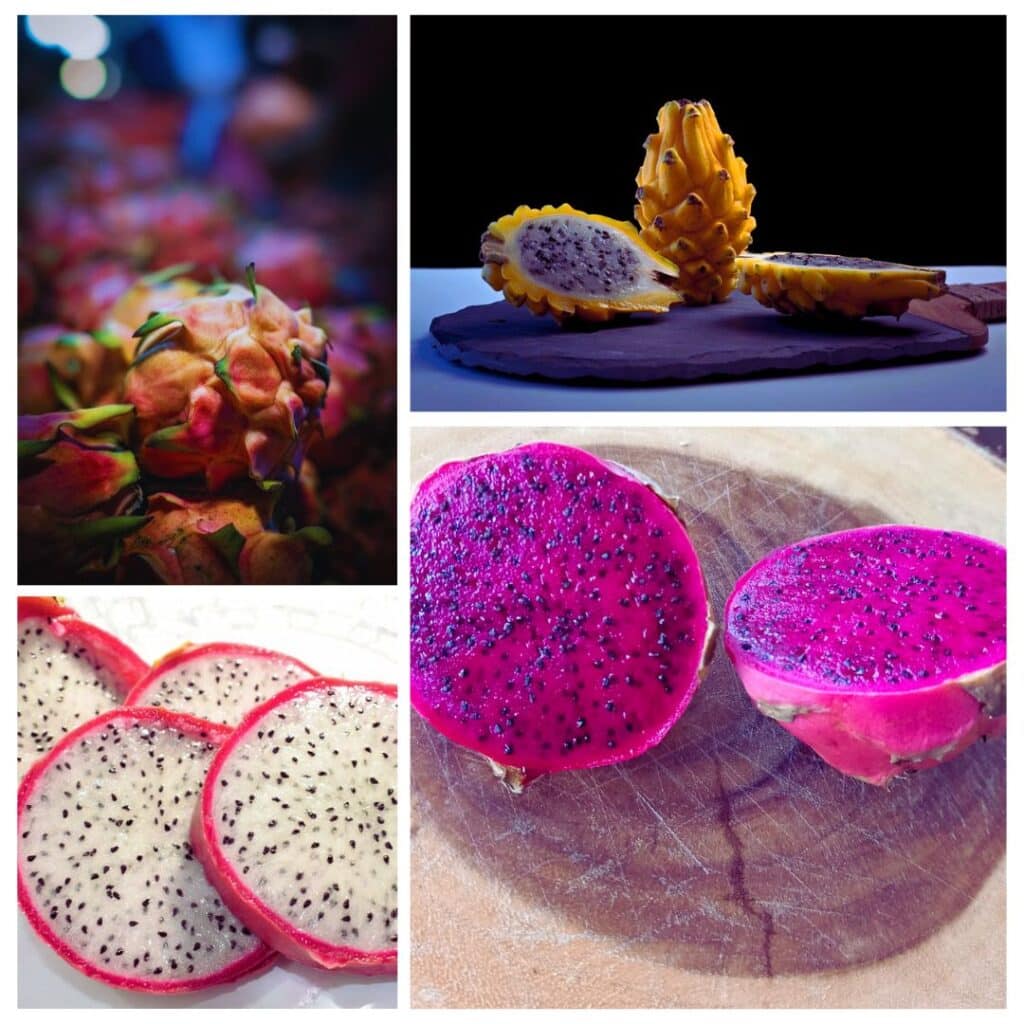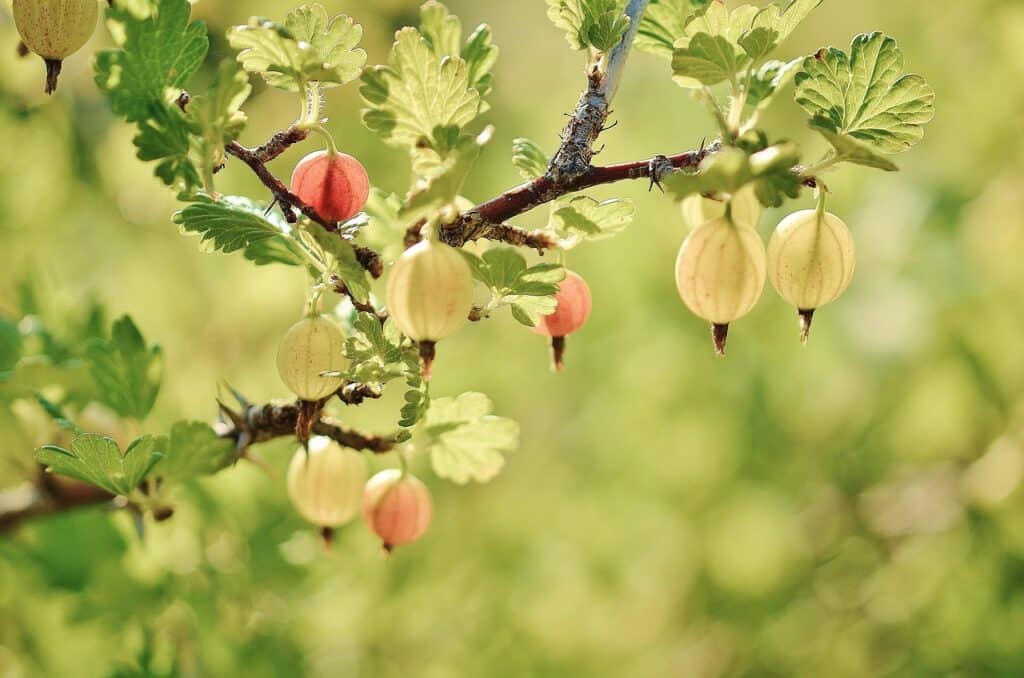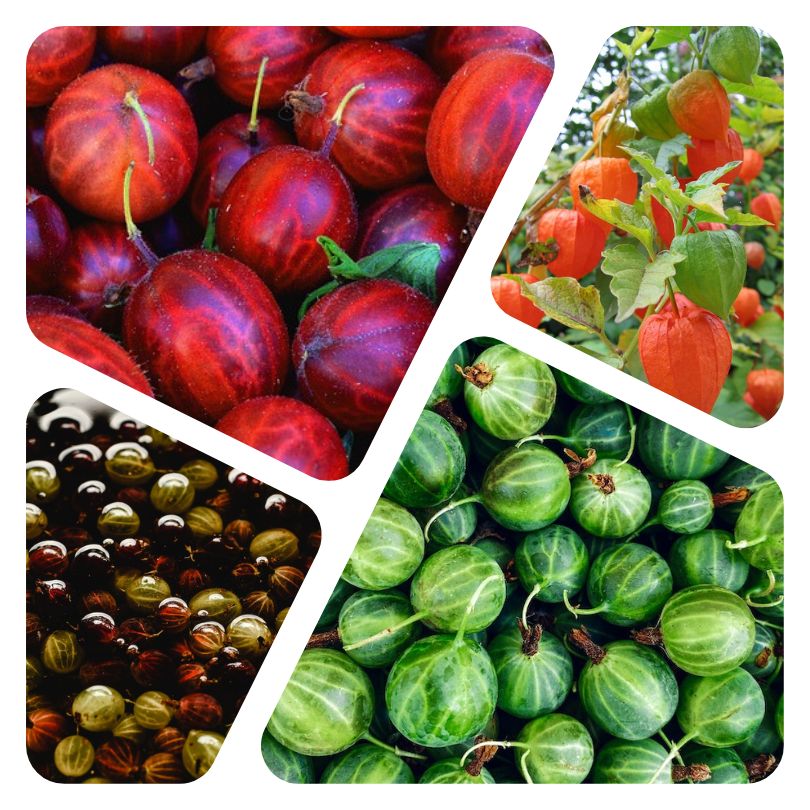How to grow Dragon Fruit from Seed
Fruits come in different shapes and forms, but few of them are as unique and exotic as Dragon fruits. This cacti, also known as “pitaya” has been very popular through Asia, Central and South America for it’s sweet flavor, peculiar flesh and those crunchy black seeds inside the pulp.
Essentially, to grow a dragon fruit plant from seed we need to plant 1-2 seeds in our seedling trays filled with cactus starting mix, cover the seeds in soil and spray with water until it gets moist. Leave the seeds under a grown light and provide an ambient with a temperature of 70-85 Fahrenheit. Spray the soil with water from time to time until the seeds germinate in 2-4 weeks.
In this article, we will go through the detailed process of how to grow a dragon fruit plant from seed so you can enjoy the best flavors this cacti has to offer in the commodity of your house.
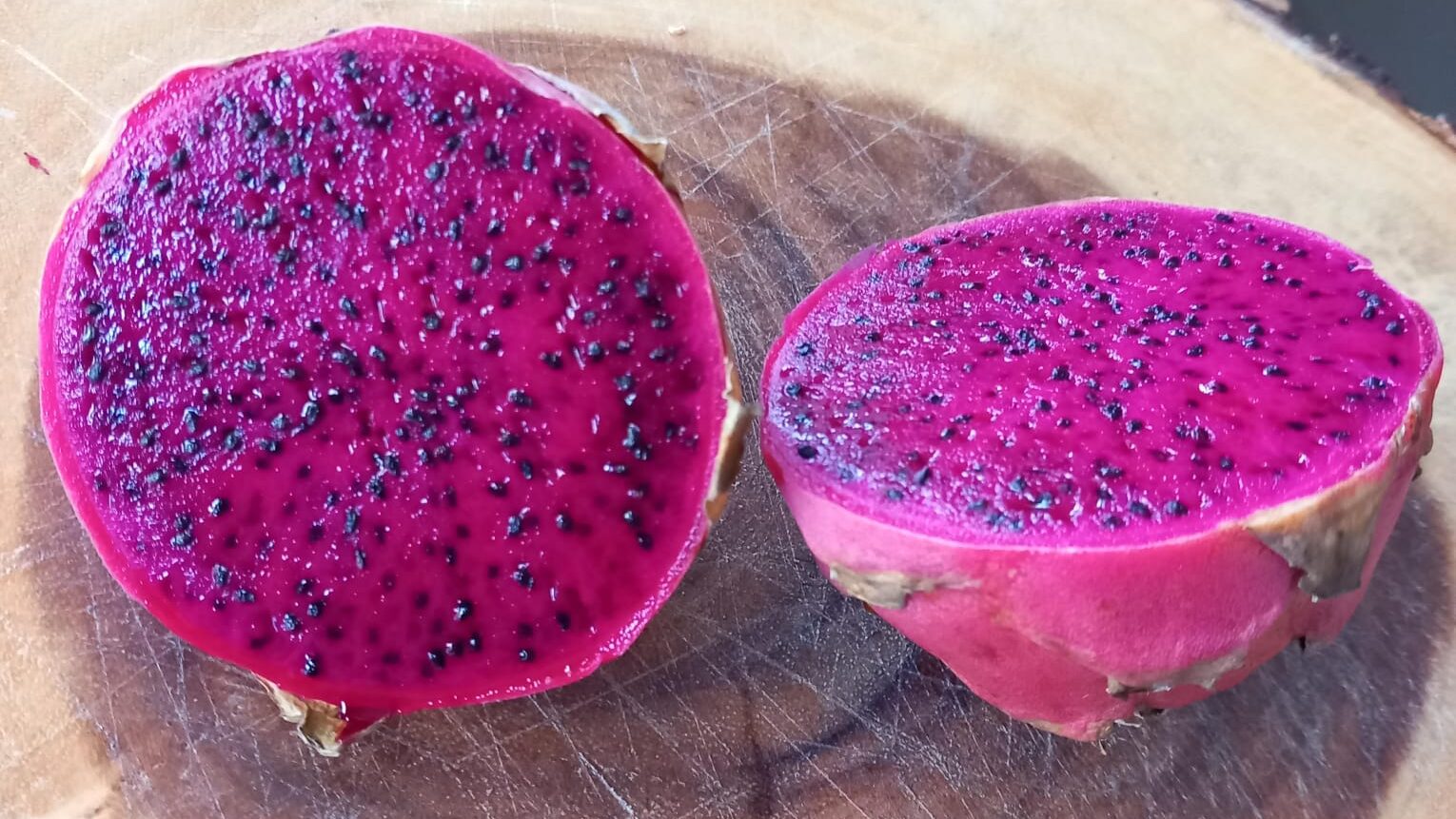
Steps on Growing Dragon Fruit from Seed
Dragon fruit plants grown from seeds can take many years before they bear any fruit, so it is essential to select the right cultivar. So before you start growing your pitaya, check out this article on the different types of dragon fruit and their different cultivars.
1- Collect the dragon fruit seeds
The first part of the process is to collect our seeds. For this we will need to cut our dragon fruit in 2 pieces, take out the flesh with a spoon, rinse it to separate the seeds from the pulp and then put the seeds in paper towel to dry (it doesn’t matter if the seeds have some pulp in them).

This process works well with any type of dragon fruit, but if you don’t have access to them or you simply don’t want to go through this, you can also purchase the seeds in this link.
2- Plant them in pots
After we let our seeds dry, we will fill a pot with some sterile starting seed mix or cactus soil mix, water the soil until it gets moist, plant the seeds about 1/2 an inch from the top, and space them 1/2 an inch from each other (if we are using the same pot for many of them) cover with more soil, and sprinkle some water on top of the seeds.
Dragon fruit seeds germinate are better in a space with a temperature of 70-85 Fahrenheit, you can cover the top of the pots with a plastic bag to retain moisture and put them under a grow light for better results (although is not necessary, it may speed the process). You should start seeing the seeds sprout in 2-4 weeks.
In the case you bought the seeds, I recommend reading the information on the bag, as they may differ a bit from seed to seed.
3- Transplant the seeds
After your seeds sprout, remover the cover and check the soil from time to time in case it needs water, only water if the soil is not wet, dragon fruit plants survive better with a somewhat dry soil than an over-watered one.
When you seeds are big enough to be transplanted (the pot is too small for them to continue developing in it) place each one of them individually in a large pot where they may continue to develop. When the plant has about 3 months old and the seedlings are stablished, begin applying half-strength fertilizer.
Growing the plant outdoors
As tropical/subtropical plants, dragon fruit can thrive in USDA zones 9+, and they prefer to be in spots with full sun. These plants are not picky about the type of soil they are in but the soil must be well-drained, specially if it’s placed in an area where it rains a lot, as this could make the plant suffer from root rot.
In USDA zone 9 the plants will need to be protected during frost times, during fall, the plant will be dormant and it will stop growing, during this period in won’t be necessary to add fertilizer to it and we will apply less water to it until the growth resumes in spring.
In the case your city is not in the USDA zone map, just take into account that Dragon fruit plants do not handle well temperatures below 50 Fahrenheit for long periods of time. If your city experiences this type of frost, either protect your plant during this period or try growing it indoors
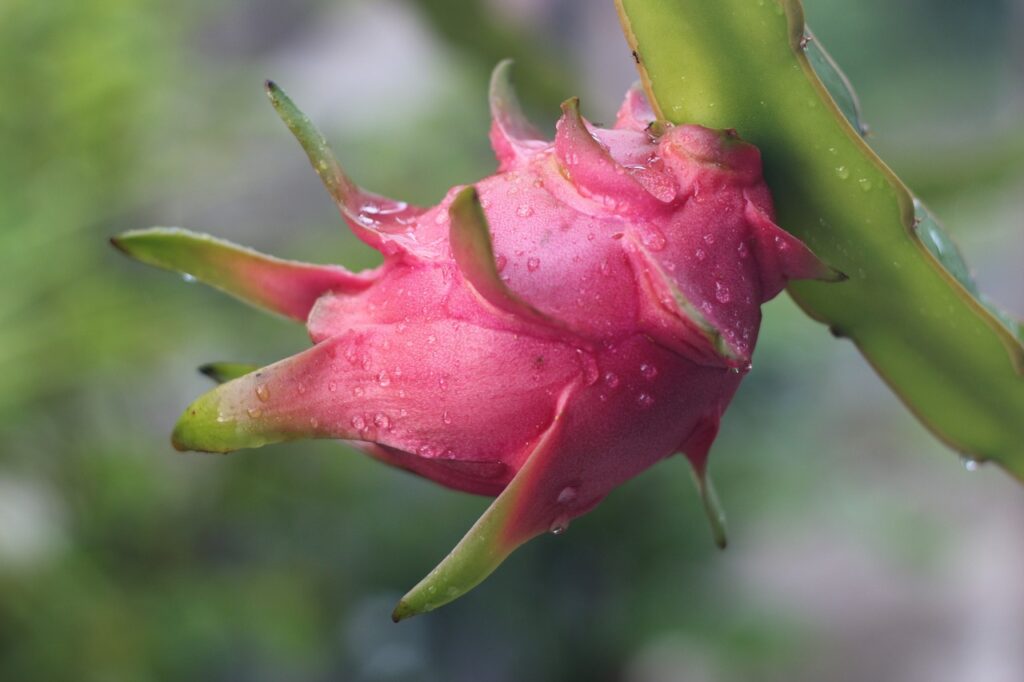
Note: This plant is a vining cactus, so you will want to attach the growing stems to a trellis, climbing pole, or any structure that allows the cactus to grow upwards before going downwards again (we will see more about this in the “pruning” section). If the plant is not supported by anything, you may get 15+ feet of cactus stems in your floor (which wouldn’t be a bad idea for a Halloween decoration).
Jokes aside, this can be done when dragon fruit plant reaches a height of about 5-6 feet.
Growing the plant indoors
Growing dragon fruit indoors is a better option if we live in a cool area. If you plan to grow your cacti indoors, transplant the seedling into a container. The container should ideally have a cactus soil mix, you can purchase it or blend it yourself, just make sure that you throw some compost into any of these mixes to help with the growth.
The last container where you transplant your dragon fruit plant should be about 15-24 inches in diameter and about 10-12 inches deep, this plants are very big so it’s important to give them enough space to develop. A 15 gallon container should do the work for the first few years. If your plant gets too big (may happen at maturity), you can also acquire a 20 gallon container.
Place the container in front of a window near the south where it can get a good amount of sun, and supply it with grow lights if needed. And as well as it happens when growing them outside, use a trellis or any useful structure to attach the cactus, so it’s able to grow upwards and then downwards into that specific umbrella shape it has.
Pruning
When you have a plant that can grow 20+ feet stems, pruning may be even more anticipated than the harvest.
When your plant is dormant in fall (or after harvest if there’s no frost in your city), take your pruning shears and cut any dead vegetation or stems in your plant. If there are places where there are too many stems, thin some of them to create air-flow between the stems.
If your plant is large enough, you may also want to prune diseased stems, take out any suckers (if you are not trying to propagate the plant) and remove any stems that are growing in a very wild manner.
Diseases
Root rot
This can happen if your dragon fruit plant receives more water than it can handle. If your plant is in a container be be careful with the watering techniques and be sure to have it in a cactus soil mix or a well draining soil. Same applies if the dragon fruit plant is outside, test the drainage of the soil and check the amount of water applied.
Cactus rot/Fungal problems
This is another water problem. High humidity or unproperly water techniques can cause this. To solve this, you can use some copper fungicide or a combination of half water and half hydroperoxide, apply this to your plant 1 time per 2 weeks in the damaged area.
If this doesn’t work, you can prune very damaged areas.
Pest
Aphids
This insects can appear in your dragon fruit plant and continually extract sap from your plant. You can control them by spraying a mix of water and mild soap in the affected areas.
Harvesting
Dragon fruit plants take 5-7 years to start producing fruits when they are grown from seed, so it is a game of patience.

When the flower first shows, it will be developing for several weeks, then, for just 1 night, the flower will bloom. Some dragon fruit plants are self pollinating, thought others are not. If you want guaranteed success though, it may be a good idea to try hand pollinating the plant, either that or getting a bat (again, not a bad idea for Halloween).
Finishing with the bad jokes, after blooming the plant should bear fruit in about 30-50 days, mature plants can yield even 220 pounds of fruit per year. You can check when the fruit is ripe when it’s giving a slight give. Happy growing!

